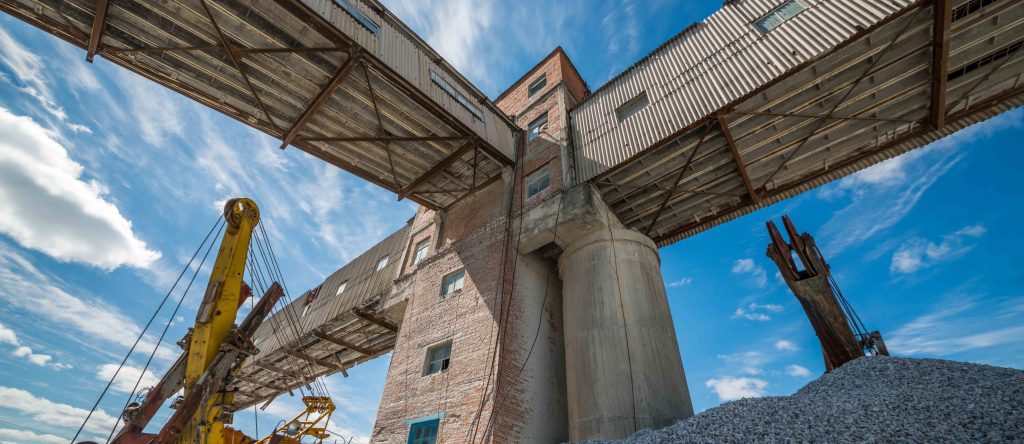
COP26: What it means for the construction industry
COP26, the 26th annual Conference of the Parties, is an international UN summit with over 190 attendees collaborating to combat climate change. This year the UK, has hosted the conference with their core aim to stay within the 1.5-degree global warming threshold.
Amongst numerous topics of debate, the summit put on spotlight the built environment in particular the impact which the construction sector has on the environment. Did you know that construction accounts for 38% of global Carbon Emissions?

With the UKGBC, the UK’s Green Building Council, being a participant in the summit, greater attention has been paid to this impact the construction industry has as a contributor of emissions amidst the climate impact. This year’s conference will include an entire day dedicated to the built environment in the second week of the summit on November 11, titled ‘The Cities, Regions & Built Environment Day’.
This is set to lead to a largescale sector effort for developing zero carbon emission buildings, to be both energy-efficient and resilient, optimistically by 2030.
How will COP26 reduce carbon emissions in the construction industry?

#BuildingtoCOP26
The #BuildtoCOP26 Coalition, created by the World Business Council for Sustainable Development (WBCSD) and the World Green Building Council (WorldGBC), will promote essential collaboration across the global built environment system, prioritising action, solutions and policy foundations across businesses, cities, and governments.
Hunziker said: “To overcome the fragmentation of efforts, the built environment needs a strong vision and aligned action by all stakeholders, from business, finance and policy. That’s why the BuildingToCOP26 Coalition is so important, and WBCSD is taking a leading role in it."
“Together with our members, we are committed to driving the change to net zero, healthy and inclusive living spaces that thrive in harmony with nature. Apart from a shared vision, we also need systems thinking and a focus on reinvention, resilience, and regeneration to transform the built environment in the decade ahead."
“Business leadership across these areas will drive the action required to realize WBCSD’s vision of 9+ billion people living well within planetary boundaries.”
Race to Zero campaign
The Race to Zero campaign hosts 120 countries, 733 cities, 3,067 businesses, 173 of the biggest investors and 622 higher education institutions.
Race to Zero’s primary objective is to build momentum to shifting to a decarbonized economy globally, encouraging governments to strengthen their contributions to the Paris Climate Agreement.
Nigel Topping, UN high-level climate champions for COP26, said: “We can’t win the Race to Zero without winning the Race to Resilience as well. Climate breakdown and the pandemic multiply inequalities — social, environmental, and economic gaps are widening across nations and across the Global North and South."
“By 2030, we must catalyse action by non-state actors that builds the resilience of four billion people from groups and communities who are vulnerable to climate risks.”
COP26 Cities, Regions and Built Environment Day
The World Green Building Council, UN High-Level Climate Champions, in collaboration with the COP26 presidency, the UK’s Department for Business, and Energy and Industrial Strategy (BEIS), have rallied to the COP president for a day to promote awareness and collaboration between member states and stakeholders in the built environment.
Cristina Gamboa, CEO of the World Green Building Council stated: “It is essential to have a full day to recognise the building and construction industry at COP26. The sector accounts for nearly 40% of global energy and process-related emissions, up to 10% of global employment and around 50% of global wealth. Despite this, our sector often remains a blind spot in global climate negotiations.
“WorldGBC has signed a letter to COP26 President, Alok Sharma, together with nine fellow international organisations which are working to decarbonise and make more sustainable the built environment across the world. We look forward to his reply and discussing how we can work together to make COP26 the success it needs to be.”
Is net-zero emissions an achievable target?
Experts argue that prior goals set to keep global temperatures at a low of 1.5 degrees by the end of this decade appear somewhat unattainable.
In 2015 the Paris Agreement set the emission reduction objectives, however, years on the NDC implementation is still in the discussion stages. Due to this incompletion, countries attending COP26 are required to update their 2030 targets.
It is especially important that developed countries and large emitters, accept responsibility for this and push targets much further this year.
It is essential that this year’s COP26 summit finally sets down international law to ensure appropriate and achievable targets are implemented.
